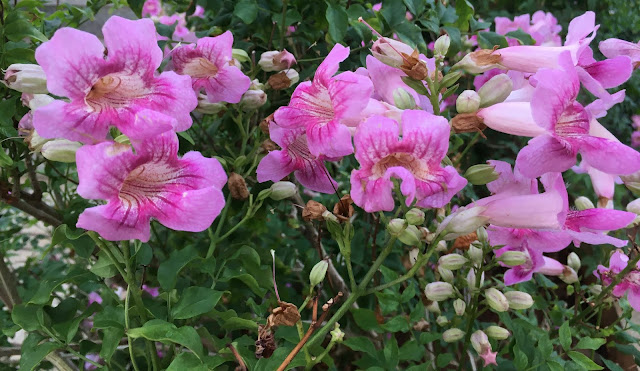Memories of a crocodile
V Gangadurai and S Nagarathinam are mourning a giant. Their giant.
"I fed Jaws for 40 years," says Gangadurai, chief reptile keeper at the Madras Crocodile Bank Trust, "My wife still asks me what happened, and some visitors still ask to see him. They get upset when we tell them he passed away."
It is Monday afternoon, so the park is shut for visitors. The only sounds to be heard are the chatter of monkeys and the calls of migratory birds, who seem to be visiting in larger numbers this year. Perhaps to pay their respects. Jaws III, the largest crocodile bred in captivity in India, passed away last week, at the ripe age of 50.
In the office of Zai Whitaker, joint director of The Madras Crocodile Bank Trust and Centre for Herpetology, the two reptile keepers are gathered with curator Nikhil Whitaker, assistant curator Ajay Kartik, and joint director Allwin Jesudasan to share memories. There are many.
For Zai, the earliest ones revolve around his surprisingly fast growth. "I was living in Kodaikanal for a few years, and would come to the croc bank on holidays. I remember one year, when I came and thought, 'Who is this?' He had grown so much," she recalls.
Nagarathinam's memories are a tribute to the crocodile's intelligence: "He had learnt his feeding schedule. He could distinguish his feeder's voices, too. So even if we were just chatting nearby, he would come close expecting food."
Feeding would happen once a week — between three to five kilograms of chicken, fish, buffalo meat, large rats, bandicoots, and sometime emus. Exercise would also happen regularly, the simple act of tempting him with food and getting him to move from one end of the enclosure to the other.
But none of that means that Jaws, who fuelled Chennai's love of crocodiles for decades, was tame. Tame is not a word — or an approach — that the team here subscribes to. As Ajay puts it, "It is a process of mutual learning and discovery." Even as Jaws came to understand boundaries and patterns of human behaviour over the years, the humans learnt about him too.
Forging bonds
How else does one establish a working relationship with the largest member of the world's largest crocodile species? And who better to describe it than Gangadurai?
His way of establishing a sense of mutual understanding with a crocodile, was through constant, careful exposure. He would take his time to understand Jaws' movements and tendencies, and make sure that there was a point of exit open. "Some 20 years ago, when he was very fast and agile, he yanked my stick away and chased me a bit," he recalls with a laugh. "But later," adds Ajay, "He understood that a tap on the nose with the stick means 'Stop'."
It was all a matter of patience, of time, and — as Nagarathinam puts it — of Jaws coming to understand that food was involved. "Once he understood that people are in his enclosure to feed him, things became easier," he explains.
That might seem like a basic step up, but as the team points out, it was all still highly uncharacteristic behaviour for a saltie. "I wouldn't go as far as to call him cooperative, but he was certainly more tolerant of human presence in his enclosures than his brothers and sisters are," says Ajay.
There were, of course, boundaries never to be crossed. As Zai explains, no member of the team ever forgot that he was a salt water crocodile, a strong and wild animal. And no one ever expected him to behave otherwise. Nevertheless, he proved time and again to have an understanding that went beyond primal instincts. Nikhil remembers one in particular, from March 1997. "I learnt a lot of healthy respect for him that day," he begins:
"It was one of his Sunday feeding shows. He was about the same size as he was towards the end, but faster and much more agile. At one point, instead of taking the food, he suddenly grabbed hold of my hand."
To have a 500-kilogram salt water crocodile clamp your hand in its mouth is a situation no one wants to be in. But, even as Jaws backed into the pool till Nikhil was knee-deep in water, Nikhil's training and instinct helped him stay calm, and refrain from struggling.
Something restricted Jaws, too. Any crocodile in such a situation would instinctively, immediately start rolling, and that would serve as a death knell for its catch. "But Jaws didn't. His movements were slow. After a point, I could see his eyes turn red: a fairly good indicator that he was worried." The crocodile could seemingly gauge that the situation was not ideal. What could have happened next is something no one can predict, but Nikhil was saved by a brave act by his assistant Ramesh. "He distracted Jaws with a stick, and Jaws immediately let me go," says Nikhil. Later, when washing his hand in a bucket, Nikhil remembers being able to see through his hand into the bottom of the bucket, so severe were his puncture marks. "But he did let me go," he smiles.
Looking ahead
Memories, though, can only do so much. There remains a yawning gap in their schedules, and crocodile bank's weekly calendar. Every Sunday, visitors would gather outside his enclosure to watch the gargantuan creature be fed by his keepers. In more ways than one, he was one of the faces of The Madras Crocodile Bank.
Now, the mantle might be taken up by Thor, a saltie who was born in the croc bank in 1982-83. Says Ajay, "When last measured in 2013, he was 4.3 metres long. He must be about 4.4 now. He is different from Jaws: more assertive and less used to people. He is less tractable for now; that will change over time."





















































